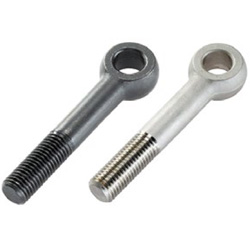(!) Since support from Microsoft will end on January 14th, 2020, Windows 7 will be excluded from the recommended environment from December 15th, 2019 on this site. Vì lý do Microsoft kết thúc hỗ trợ cho Windows 7 vào ngày 14/01/2020, Windows 7 sẽ là hệ điều hành không được khuyến khích sử dụng với trang web này từ ngày 15/12/2019.
Search by Category / Brand Tìm theo danh mục, nhãn hiệu
Search by Category Tìm theo danh mục
- [Thông báo] Cập nhật địa chỉ kho tập kết hàng hóa tại khu vực miền Nam của MISUMI Việt Nam. Xem chi tiết.
[Announcement] Update on warehouse address in the Southern region of MISUIMI Vietnam. See more. - [Cảnh Báo] Thủ Đoạn Lừa Đảo Từ Nhân Viên Giao Hàng – Yêu Cầu Trả Phí Ship. Xem chi tiết.
[Warning] Fraud Calling from Shipper - Asking to Pay Shipping Fee. See more.
Clamping Screws(Thread Dia.:M5)
Brand |
|
|---|---|
| CAD |
|
| Days to Ship |
|
1 itemsMặt hàng
- Sort By
-
You can add up to 6 items per a category to the compare list.

Clamping Screw - Swing Bolt DIN 444, B Type
HARA DOKI
[Product Information] Swing Bolt is similar to DIN 444. Steel Design of High Quality 8.8. Stainless Steel A2-50 has a Tensile Strength of Minimum 500 N/mm2. •Related keywords: HALDER, Clamping Screw, Adjusting Screw/Adjusting Block
- CAD :
- 3D
Thread Dia. Screw Type Tip Shape Material (Tip) Material (Thread) M5 Screw Tip - - Stainless Steel ~ Steel From: 509,342 VND Days to Ship: Số ngày giao hàng: 14 Day(s)  14 Day(s)
14 Day(s)
| BrandNhãn hiệu |
|---|
| Product SeriesDòng sản phẩm |
| CADCAD |
| From |
| Days to ShipSố ngày giao hàng |
| Thread Dia. |
| Screw Type |
| Tip Shape |
| Material (Tip) |
| Material (Thread) |
You can add up to 6 items per a category to the compare list. | |
| BrandNhãn hiệu | HARA DOKI |
| Product SeriesDòng sản phẩm | |
| CADCAD |
|
| From | 509,342 VND |
| Days to ShipSố ngày giao hàng | 14 Day(s) |
| Thread Dia. | M5 |
| Screw Type | Screw Tip |
| Tip Shape | - |
| Material (Tip) | - |
| Material (Thread) | Stainless Steel ~ Steel |
Loading...Tải…
ConfigureTạo
Specification/DimensionsĐặc điểm kỹ thuật / Kích thướcĐặc điểm kỹ thuật / Kích thước
-
Thread Dia.
-
Screw Type
-
 Full Threaded
Full Threaded -
 Screw Tip
Screw Tip
-
-
Tip Shape
-
 Spherical
Spherical -
 Flat
Flat -
 Serrated
Serrated
-
-
Material (Tip)
-
Material (Thread)
Related Categories to Clamping ScrewsDanh mục liên quan đến Clamping Screws
FAQ Clamping Screws
- Question: What are some tips for effectively using clamping screws to ensure a secure and stable connection?
- Answer: To ensure a secure and stable connection with clamping screws, follow these tips:
1. Choose the appropriate clamping screw size and type for your application.
2. Clean and prepare the surfaces to be clamped to ensure optimal contact.
3. Apply even pressure when tightening the clamping screw.
4. Use a torque wrench or an appropriate tightening tool to achieve the recommended torque.
5. Regularly inspect the clamping screws to ensure they remain tight and secure. - Question: What are the different types of clamping screws?
- Answer: There are various types of clamping screws, including:
- Hex head screws: Require a wrench or socket for tightening.
- Thumb screws: Can be tightened by hand without tools.
- Wing screws: Feature wing-like extensions for easy hand tightening.
- Knurled head screws: Have a textured surface for improved grip during tightening.
- Set screws: Used to secure components onto shafts or surfaces. - Question: What are clamping screws used for?
- Answer: Clamping screws are commonly used in factory automation for securing and holding components together. They provide a strong and adjustable connection, ensuring stability and preventing movement or loosening during operation. Clamping screws are used in various applications, such as assembling fixtures, fastening workpieces, or securing machine components.
- Question: How do I install clamping screws?
- Answer: To install clamping screws:
- Align the components to be clamped together.
- Insert the clamping screw through the aligned holes or into the threaded receptacle.
- Rotate the clamping screw clockwise to tighten it.
- Use an appropriate tool, such as a wrench or screwdriver, if necessary, to ensure proper tightening.
- Adjust the clamping force as needed for the desired stability and secure connection.











How can we improve?
How can we improve?
While we are not able to respond directly to comments submitted in this form, the information will be reviewed for future improvement.
Customer Privacy Policy
Thank you for your cooperation.
While we are not able to respond directly to comments submitted in this form, the information will be reviewed for future improvement.
Please use the inquiry form.
Customer Privacy Policy